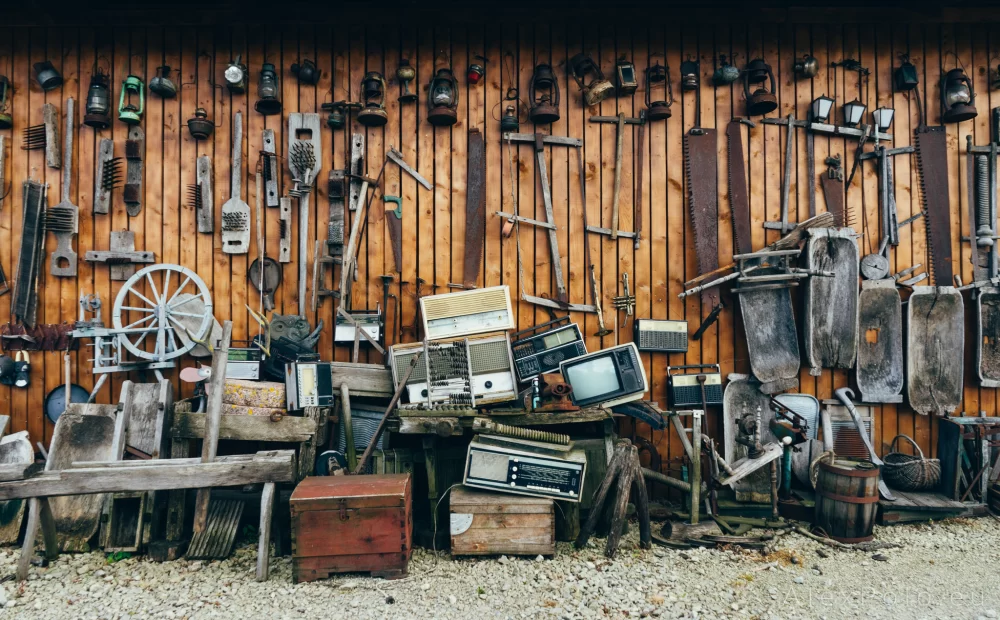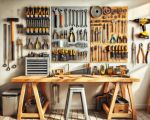How to Maintain Your Power Tools Properly: Essential Tips for Longevity
Over the years, I've learned that the secret to getting the most out of my power tools lies in proper maintenance. As an avid DIY enthusiast, I depend on my tools to perform at their best for every project. However, just like any other equipment, power tools need care and attention to ensure they last and continue to operate effectively. In this article, I will share my tips and tricks on how to maintain power tools properly so they serve you for years to come. Whether you're using drills, saws, or sanders, following these practices can help prevent costly repairs and extend the life of your valuable tools.
1. The Importance of Regular Maintenance for Power Tools
When I first started using power tools, I didn't think too much about maintenance. It wasn’t until I experienced a few breakdowns that I realized how important it is to take care of your equipment. Regular maintenance isn’t just about fixing problems when they arise; it’s about preventing them from occurring in the first place. Proper care will ensure that your tools remain safe to use, perform at their best, and last much longer. Power tools are an investment, and taking the time to maintain them properly is the best way to protect that investment.
Another key reason for maintenance is safety. Malfunctioning power tools can pose serious safety risks, whether it's an electrical issue, a worn-out blade, or a jammed mechanism. Regular checks and cleanings can help catch problems early, reducing the risk of injury. In fact, proper maintenance can save you money in the long run by minimizing the need for repairs and replacements.
2. Essential Maintenance Tasks for Power Tools
Over the years, I've developed a list of essential tasks that I perform regularly on my power tools. These tasks are simple but effective in keeping everything running smoothly:
- Cleaning: One of the most important things you can do to maintain your power tools is to keep them clean. After each use, I make sure to wipe down the tool to remove sawdust, dirt, and grime. For tools like drills and sanders, I use compressed air to blow out any debris that might be trapped inside. This not only helps prevent the buildup of harmful particles but also keeps your tool’s components working properly.
- Lubrication: Power tools with moving parts, such as saws and drills, require lubrication to ensure smooth operation. I make it a habit to lubricate the tool’s moving parts according to the manufacturer’s instructions. This helps reduce wear and tear on the internal mechanisms and prevents overheating, keeping the tool running smoothly for longer.
- Blade and Bit Care: Keeping blades and bits sharp is essential for efficient cutting, drilling, and sanding. I regularly check the condition of my saw blades, drill bits, and sanding pads. When I notice that a blade is starting to dull, I either sharpen it or replace it. For tools that use interchangeable blades, this is a simple process that keeps your tool performing at its best.
- Battery Maintenance: If you use cordless power tools, maintaining the batteries is crucial. I make sure to charge my tools only when needed and avoid leaving them plugged in for extended periods. Overcharging or letting the battery die completely can shorten its lifespan. I also store the batteries in a cool, dry place to ensure they last as long as possible.
- Inspecting Cords and Wiring: For corded power tools, checking the cords and wiring regularly is important. I inspect the power cord for any signs of fraying, cuts, or exposed wires. If I notice any damage, I repair it immediately to prevent further wear or potential electrical hazards.
3. Proper Storage to Extend the Life of Your Tools
Storing your power tools correctly is just as important as regular maintenance. After each project, I always make sure to store my tools in a safe and organized manner. Storing tools in a dry, cool environment helps prevent rust and corrosion, especially for tools with metal components. I also recommend keeping power tools in a toolbox or cabinet to protect them from dust and accidental damage. This storage solution not only keeps your tools in good condition but also helps you stay organized and find what you need when you need it.
If you have a large collection of tools, using a tool chest or rolling cart with compartments can make it easier to organize everything. It also makes transporting tools to different job sites much simpler. I’ve found that having a designated place for each tool reduces the likelihood of losing or misplacing important equipment.
4. Dealing with Specific Power Tool Issues
Every power tool will eventually experience some wear and tear. Over the years, I've encountered several common issues with different tools. Here's how I deal with a few of them:
- Drills: If my drill starts making a strange noise or doesn't hold the bit securely, I check the chuck for wear or damage. Often, cleaning and lubricating the chuck resolves the problem. If that doesn’t work, I might need to replace it. I also check the battery, as a weak or old battery can cause performance issues.
- Saws: Saw blades can become dull over time, leading to uneven cuts. To prevent this, I sharpen the blade regularly or replace it if necessary. If the saw is not cutting straight, I also check the alignment of the blade and make sure the motor is running smoothly.
- Sanders: If my sander isn’t working as efficiently, I inspect the sanding pad and replace it if it’s worn out. I also check the motor and vents for any dust buildup that could be hindering its performance.
5. Professional Repair vs. DIY Maintenance
While I’ve learned to handle most of my power tool maintenance myself, there are times when professional repair is needed. If a tool is not working properly despite your best efforts, it may be time to take it to a professional. I always recommend checking the warranty before attempting repairs yourself, as attempting a repair might void it. For more serious issues, like motor malfunctions or electrical problems, it's best to have a professional technician take a look. A quick repair can often save you money in the long run by extending the life of the tool.
6. When to Replace Your Power Tools
Even with the best maintenance, all tools have a lifespan. In my experience, knowing when to replace your power tools is just as important as maintaining them. If a tool is constantly malfunctioning, is no longer efficient, or is beyond repair, it may be time to upgrade. A new tool may seem like an investment, but it can provide improved performance, safety, and efficiency. Plus, investing in new technology might save you time and frustration down the road.
In conclusion, maintaining your power tools is essential for keeping them in great shape and maximizing their lifespan. Regular cleaning, lubrication, and inspections will ensure that your tools perform well for years to come. Whether you're a professional contractor or a DIY enthusiast, taking the time to properly care for your power tools can help you get the best results and prevent costly repairs.
SEO Title: How to Properly Maintain Power Tools for Longevity and Efficiency SEO Keywords: power tools maintenance, proper care for power tools, tool upkeep, how to maintain power tools, extend tool life SEO Description: Learn essential maintenance tips for your power tools, including cleaning, lubrication, and storage, to ensure longevity and efficiency. Find out more at ToolNest.








